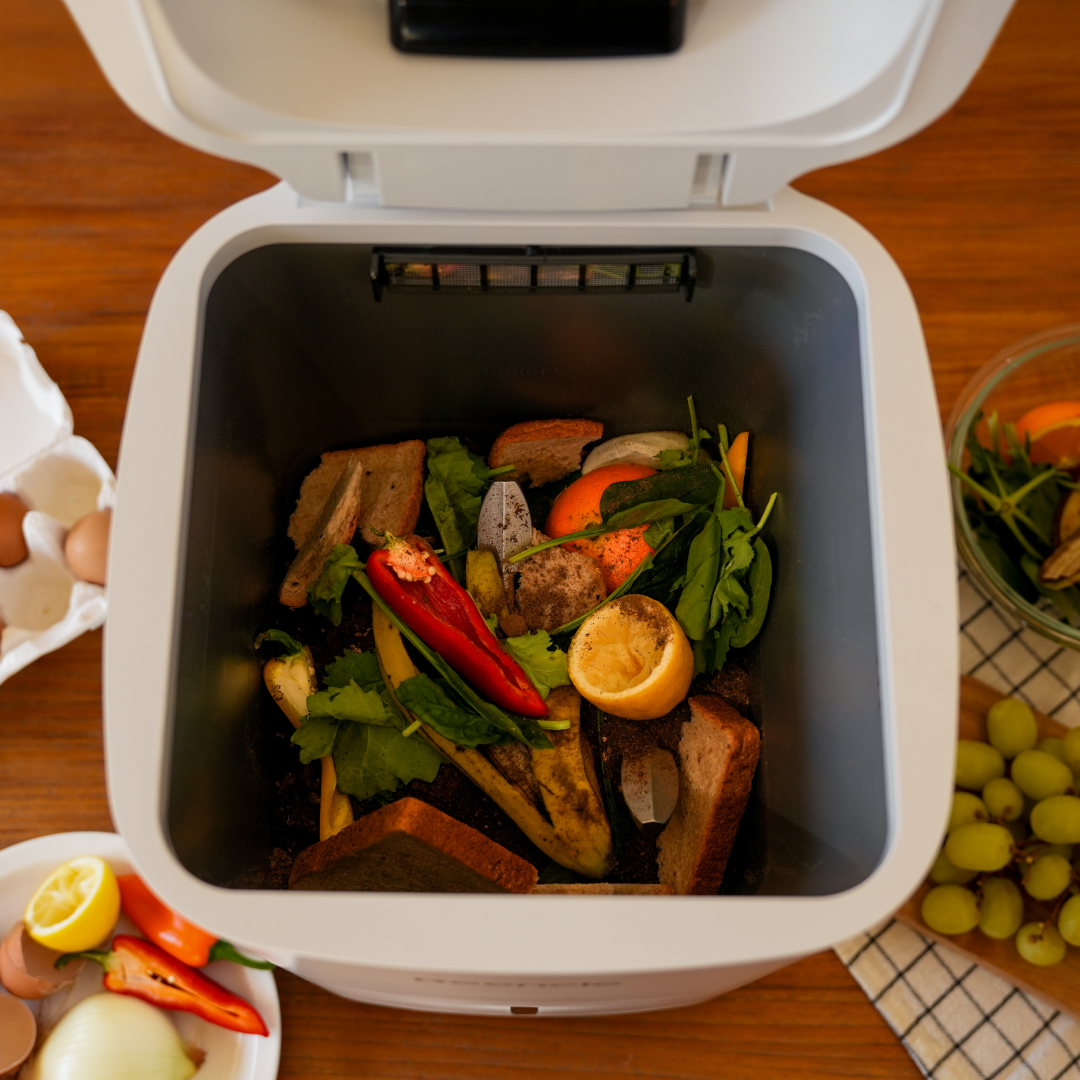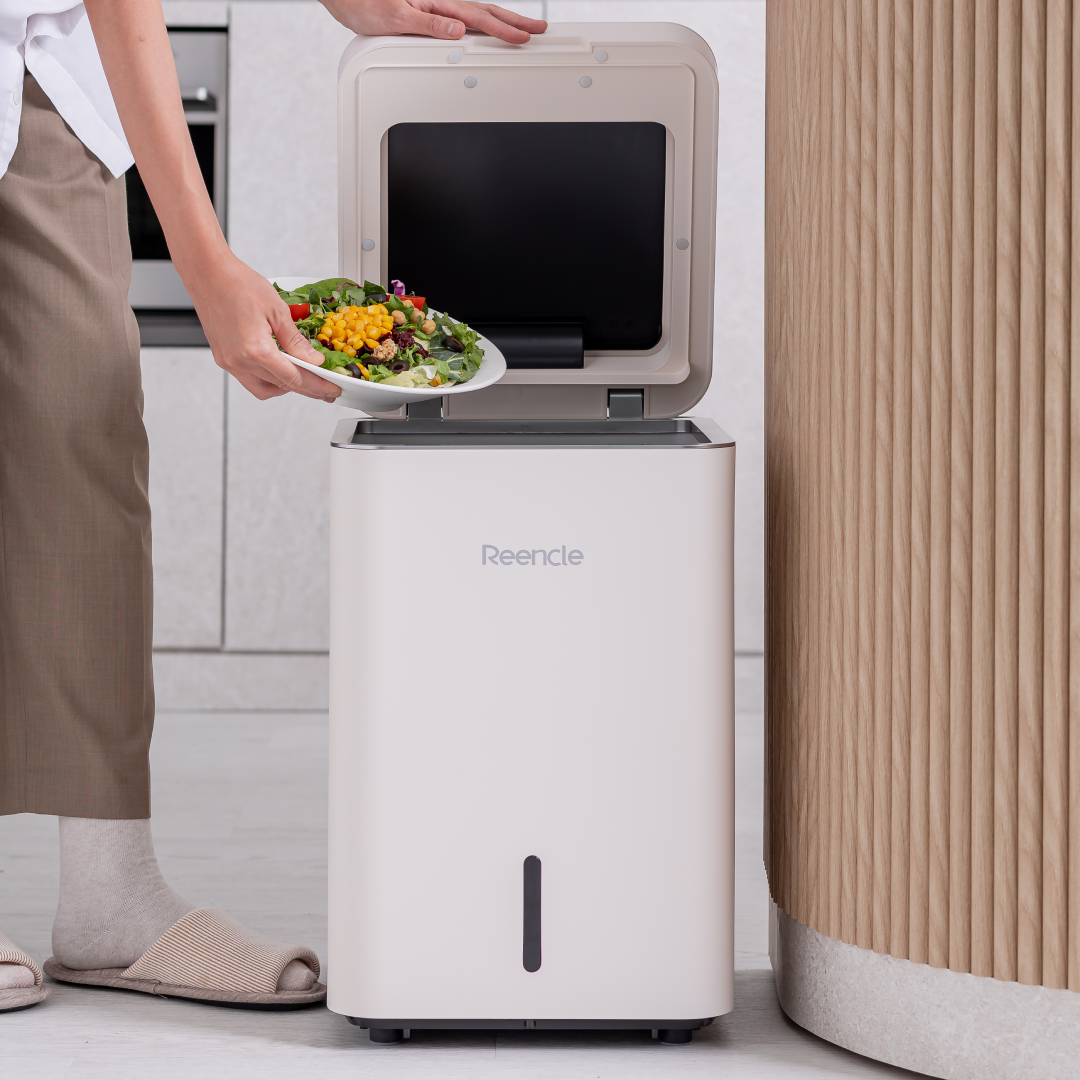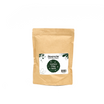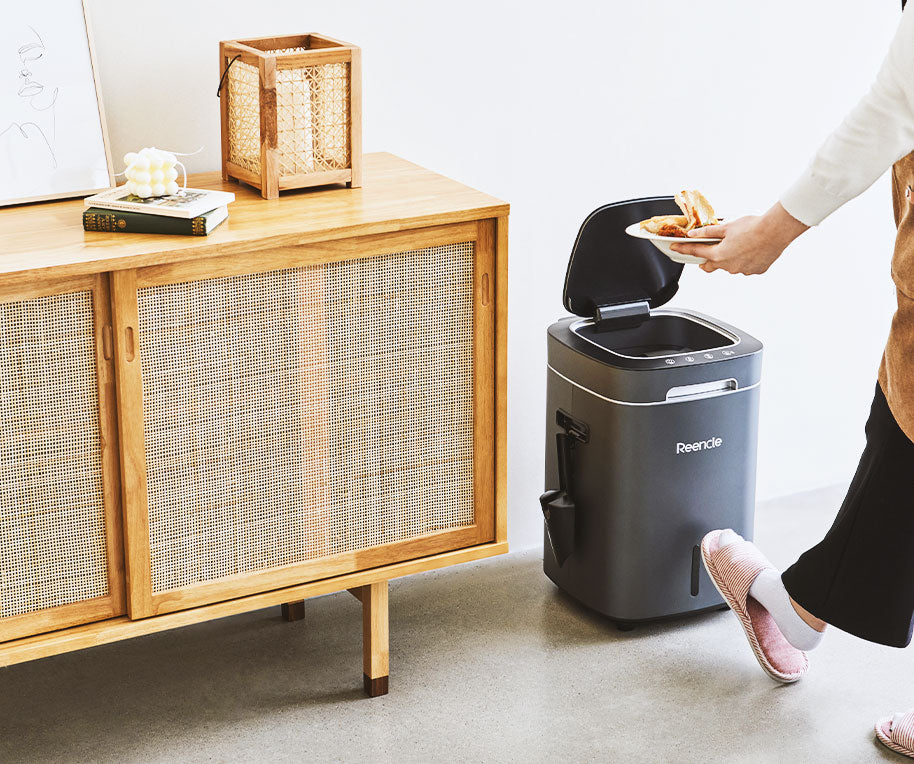We understand that starting with electric composting can be challenging. Here’s a simple comparison between Reencle and Dehydrator composters like lomi or mill to help you choose.
Why you can trust us:
-
We are electric composter brand who want your garden to thrive
We've successfully sold 220,000 units globally
We use Microorganism to make Real Compost
Want to know more? Visit our store
Table of Content
1. Don't Burn, Simply Churn
Dehydrator type composters boast high temperatures - some claim to operate at over 100°C (212°F). This is anticipated as it must exceed 100°C to remove moisture.
Traditional hot compost piles peak at 66°C to preserve microbes and this threshold is where the thermophilic bacteria thrive to decompose organic materials. However, the combination of steam and high temperatures in Dehydrator sterilizes food scraps, presenting a hurdle for composting.
In contrast, Reencle takes a different approach, maintaining an optimal temperature range of 55~60°C (131~140°F). This allows our patented microbes to actively participate in decomposition when food scraps are introduced to the microbial bed in the chamber. The result is a thriving community of live and active microbes, ensuring efficient and effective composting!
2. Dried food waste is NOT Compost!
Many dehydrator-type composters showcase the convenience of using the dried material in potted plants or gardens, but a word of caution is in order. Here's why you might want to think twice:
The majority of our daily food intake contains sodium, especially processed and canned foods, which can elevate sodium levels. Dehydrating these food scraps without addressing the sodium content essentially results in a sodium-concentrated food waste "jerky."
Composting, ideally, should transform organic waste into nutrient-rich fertilizer. However, high sodium levels in the “jerky” compost, stemming from dehydrated food with concentrated sodium, can be detrimental to both plant growth and soil health. It's crucial to be aware of this sodium concern when utilizing dehydrator-type composters. Regular monitoring of compost quality becomes imperative for ensuring optimal results in gardening or landscaping projects.
Also, CalRecycle.org (California Department of Resources Recycling and Recovery, is a state agency in California) literally states that “Dried food waste isn't compost”; true compost is the outcome of a prolonged chemical-biological degradation process, taking weeks or months. Dehydrators can minimize odors and vectors in dry output. However, rehydrated food waste may lead to issues like mold growth, attracting vectors, odors, and health concerns.
Here is the product that makes real compost
Further Readings
3. Reencle: The Superior Alternative for Indoor Composting
Reencle distinguishes itself by emulating the natural environmental degradation process within its chamber, leveraging a unique microbial mix. Unlike simple and ordinary drying method, Reencle's microbes facilitate fermentation and biological decomposition of food waste, achieving a remarkable 90% reduction in as little as 24 hours.
Reencle's legitimacy is underscored by robust compost testing, revealing substantial reductions in sodium levels post-composting and consistently high-quality compost across diverse testing criteria. Notably, Reencle compost avoids rehydration issues and methane production in landfills, offering a sustainable solution to the food waste problem and mitigating greenhouse gas emissions, topics we will delve into in upcoming articles.
4. Conclusion
In summary, when choosing between Reencle and Dehydrator composters, the key lies in their approach and outcomes. While Dehydrators may face challenges like rehydration and concentrating sodium, Reencle excels with a natural microbial-driven process, yielding high-quality compost.*A crucial reminder: While Reencle expedites the composting process, it's essential to cure the compost for an extended period. The longer curing time ensures maturation and the complete breakdown of remaining food scraps, ultimately transforming them into nutrient-rich fertilizer!"
*A crucial reminder: While Reencle expedites the composting process, it's essential to cure the compost for 3 weeks. The longer curing time ensures maturation and the complete breakdown of remaining food scraps, ultimately transforming them into nutrient-rich fertilizer!"
Frequently Asked Questions
How can i utilize microorganisms as compost?
To use microorganisms for composting:
- Remove compost with the provided scoop, keeping the MIN line inside the unit.
- Sift to remove undecomposed pieces.
- Mix 1 part compost with 4 parts soil.
- Cure the mixture for 3 weeks in a breathable container.
It's ready when it's dark, crumbly, and smells earthy.
When should i empty the microogranisms?
The Max line at the top of the Reencle chamber indicates when to remove the byproduct. You can choose to remove it at the glowing white (LED) line for more frequent emptying, about every two weeks, or at the "Min" line for less frequent removal, about monthly. The method depends on your preference and needs.
Is it okay to turn off the product when travelling?
For your convenience, we've outlined instructions tailored to your travel duration:
- Keep the power cord plugged in.
- Moisten the microorganisms on your departure day.
For longer trips exceeding a week
- Stop adding food waste 2-3 days before leaving.
- Use the "dry" function for 2-3 days to keep microorganisms dry.
- Unplug the power cord when you leave.
- Store microorganisms in a sealed ziplock bag in a cool, dark place.
- Upon return, reconnect power, add microorganisms, and activate them with 500ml of water after 6 hours.





















Leave a comment
This site is protected by hCaptcha and the hCaptcha Privacy Policy and Terms of Service apply.